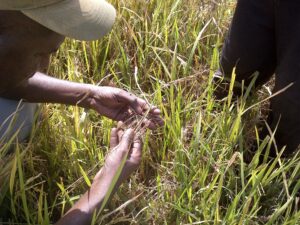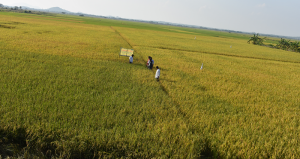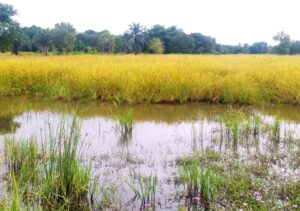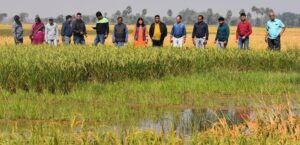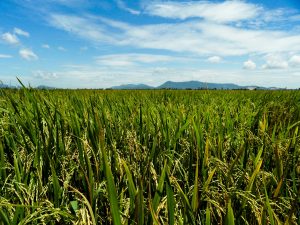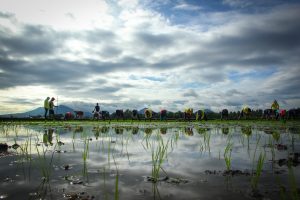Rice is produced in landscapes that range from extreme monocultures to highly diverse areas. Tropical rice fields often have a great diversity of naturally occurring arthropod groups that function as predators and parasitoids. At least 200 species of parasitoids and 150 species of predators live in this environment. Their diversity and abundance are the key indicators of the degree of biological control services present in an ecosystem, such as resisting pest invasion and regulating pests.
Since rice is grown in seasons, and so does not provide a permanent habitat for pests, most of them come and infest fields when rice is planted. They multiply their population rather quickly. Their natural enemies, however, tend to prevent their exponential growth.
When rice is harvested, these natural enemies take refuge in other habitats surrounding the rice fields. But, as soon as a new crop is established, they too swarm the fields again. Generalist predators, however, such as spiders and crickets, are less mobile.
Based on this, factors such as landscape structure, habitat diversity, cropping patterns, and farmers’ crop management practices can greatly affect these groups and the services they provide. These relationships are often scarcely studied and quantified.
Our maps show some of the preliminary results culled from an assessment of predators and parasitoids in rice fields of Luzon Island in the Philippines. We obtained 3,050 net sweep samples from 61 sites. These sites were selected using remote sensing derived land-cover data to ensure that the sampling covered a range of landscapes representative of the fraction of land used for agriculture. We caught 11,041 predators that represent 109 species (81 genera) and 6,682 parasitoids that come from 156 species (87 genera). Note, however, that we could not determine the species level of all the insects found.
The number of insects caught at different sites was from 37 to 2,518, with a median of 209. The number of species, on the other hand, was from 11 to 79, with a median of 36. There was a spatial clustering of abundance (expressed as n), species richness (expressed as Sobs), and biodiversity (expressed as alpha) in parasitoids and predators. Associations between species diversity and habitat and crop management were very weak and, in most cases, statistically insignificant. The relative strength of spatial autocorrelation between sites and the weakness of more association with local variables suggest that either larger-scale processes shape ecosystem services for biological control or that our results are strongly influenced by sampling artifacts (sampling time, agronomic practices, and regions are confounded).
Although parasitoid and predator biodiversity is clearly closely related to land-use patterns, there is still a need to establish direct linkages between diversity indicators and biological control services. Of particular interest is the effect of agronomic practices such as pesticide use on biological control; the influence of selected vegetation that provides food resources to parasitoids, such as nectar-producing flowers; and the use of ecological engineering methods to design more effective habitat mixes. Further research should answer these questions.
____________________
Dr. Heong is a senior scientist in entomology and a specialist on integrated pest management, Dr. Hijmans is a GIS specialist at IRRI. Ms. Catindig, an assistant scientist, and Ms. Villareal, a researcher, works in IRRI’s Crop and Environmental Sciences Division.

